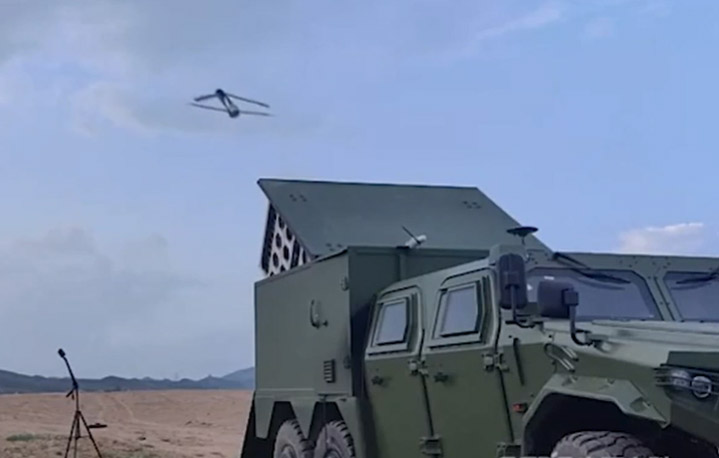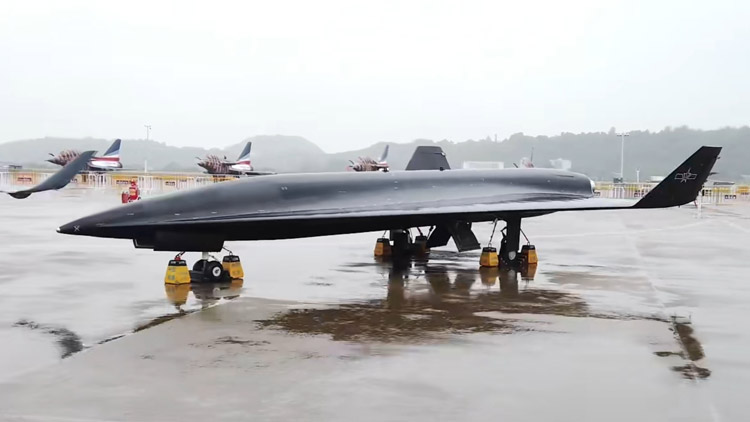INDIAN ARMED FORCES CHIEFS ON
OUR RELENTLESS AND FOCUSED PUBLISHING EFFORTS

SP Guide Publications puts forth a well compiled articulation of issues, pursuits and accomplishments of the Indian Army, over the years

I am confident that SP Guide Publications would continue to inform, inspire and influence.

My compliments to SP Guide Publications for informative and credible reportage on contemporary aerospace issues over the past six decades.
Swarm of Swarms
China could employ drones in thousands or lakhs against our frontline troops at chosen points along the Line of Actual Control (LAC) in conjunction with attacks by bigger drones, which could also be in swarms
 |
The Author is Former Director General of Information Systems and A Special Forces Veteran, Indian Army |

Media reports of February 2022 indicated that the US is working on acquiring a counter-Anti-Access/Area-Denial (A2/AD) autonomous drone swarm system that can command other swarms; thousands of unmanned aerial, surface, underwater, and ground drones to overwhelm enemy military installations. The obvious aim is to target Russian forces in Ukraine, as well as Russian mainland. Having declared that the US-NATO are preparing for conflict with China, this drone swarm system would also be used against China. More importantly, the US wants to offset the advantage Russia and China enjoy in this field. But it is going to be a long haul considering that the US test for a hypersonic missile last year was not successful.
The fact today is that that American air defence system has gaps. A recent simulated study by Chinese scientists, revealed that even North Korea's ICBMs can hit Central America, which was reported in these columns earlier. The US is vulnerable to the DF series missiles of China; the 1,500-2,000 km DF-21D 'carrier killer' anti-ship ballistic missile (ASBM) with 1,500-2,000 km range can hit the second island chains and any approaching US naval flotilla, the DF-26 intermediate-range ballistic missile (IRBM) with 3,500 km range can hit any US naval base in western Pacific as also by the DF-17 hypersonic missile. China also has the DF-21D ASBM, the DF-10A subsonic cruise missile, and the DF-100 supersonic cruise missile.
According to reports, Russia is bracing for attack by some 50,000 Ukrainian Kamikaze drones to overwhelm the frontlines
But looking at the war in Ukraine, the news now is that Russia has destroyed NATO's deep underground command bunker in Kiev (Ukraine) on March 12 this year using its 'Kinzhal (Dagger) hypersonic missile, which was first reported by 'Pronews' (Greek portal of political and military information) citing American sources. Dozens of NATO officers were reportedly killed. Built at a depth of 120 metres, the command post housed more than 300 personnel, mostly British and Poles but also Americans. Ukrainian officials claim that Russia is firing these missiles in thousands and both Ukrainian and American air defence cannot shoot down the Kinzhal (Dagger) missile flying at an altitude 20 km, and then falling at high speed on the target. According to YuriyIgnat, spokesman of the Ukrainian Air Force Command, "We cannot yet counteract these missiles. They fly along a ballistic trajectory. We have no means against them".
The above battlefield asymmetry has led Ukraine to increase swarm drone attacks on Russian forces. According to a news report in 'Forbes' magazine dated March 24, Russia is bracing for attack by some 50,000 Ukrainian Kamikaze drones to overwhelm the frontlines. In January 2023, Ukrainian General Command announced the formation of new "tactical drone assault units".

Now it is reported that Ukraine has bought almost the entire market of first-person view (FPV) drone components available in China – some 50-100 thousand units. FPV drones are smaller than standard quadcopters and fly at speeds of 195 km/h or more. Ukraine is using FPV components to make kamikaze drones with a shaped charge warhead from RPG, or with a fragmentation grenade. Carrying an anti-tank RPG warhead or RLG-3 grenade, these drones constitute effective lethal weaponry.
It was reported in these columns earlier that the Indian Army began receiving the first batch of 100 armed offensive drones in January 2023. The Indian Government has given a fillip to the fledgling indigenous drone industry in recent months. 'Drone Shakti Scheme' was part of the proposals in the Union Budget last year - 2022, which pushed for promotion of drones through startups and skilling at Industrial Training Institutes (ITIs); startups to be promoted to facilitate 'Drone Shakti' through varied applications and for Drone-As-A-Service (DrAAS). The aim is to unify the efforts of the drone ecosystem through the institutionalisation and creation of a structure to enable synergies among multiple stakeholders.
In January 2023, Ukrainian General Command announced the formation of new "tactical drone assault units"
Subsequently, the government also announced the 120 crore Production Linked Incentive (PLI) scheme for the drone segment in 2022. Now data from the research firm 'Tracxn Technologies' reveals that in FY2022-23, drone start-ups attracted $49.7 million in investments across 20 rounds; compared to $25 million received in FY2021-22 across 23 rounds and $11.2 million received in FY2020-21 across 20 rounds. This shows a 300 per cent investments growth in this segment in the last three fiscals. Tracxn Technologies has also said that 90 per cent of the Indian airspace is now accessible to drone use after the laws and regulations were liberalised in 2021. All this is good news. In addition to use by Armed Forces, drones are increasingly being increasingly used for a variety of tasks including surveillance, crowd monitoring, traffic monitoring, medicine delivery, food delivery, traffic monitoring, agriculture and the like.
But we need to seriously examine the war in Ukraine especially in terms of use of missiles and drones. We could be faced with similar situations in the next conflict with China, which may be forced by Beijing in the near future. China should be expected to employ swarms both during missile and drone attacks.

China had demonstrated a drone swarm launcher during 2020 though the tests were not public. This system can reportedly launch up to 200 drones at once. The report claimed that drones were quickly and simultaneously released while the transport platforms were in motion. China claimed the drones switched between different formations once they were released and conducted reconnaissance and attack missions on ground targets.
At the Zhuhai Air Show in November 2022, China displayed another truck-mounted swarm launcher that reportedly launches about 18 drones at once. During the tests conducted by the state-owned China Electronics Technology Group Corporation, drones were released from truck-based, 48-unit launchers. This upcoming system will comprise of extremely mobile loitering drone swarm launcher with individual launch canisters that can be quickly reloaded. The system would be employed for surveillance, precision strike, saturating attacks, area control and damage assessment,
Ukraine is using FPV components to make kamikaze drones with a shaped charge warhead from RPG, or with a fragmentation grenade. Carrying an anti-tank RPG warhead or RLG-3 grenade, these drones constitute effective lethal weaponry.
China's WZ-8 (in service with PLA since 2019) supersonic-hypersonic, remotely operated, high-altitude drone has a cruise speed of Mach 6 to Mach 7 and service ceiling of 50,000 metres.
The DF-17 is China's medium-range ballistic missile mounted on a DF-ZF hypersonic glide vehicle. The missile can be launched from a mobile transport-erector launcher and has a range of up to 2,500 km. It can be fired from a regular rocket booster as an HGV system.
In February 2023, Chinese scientists claimed to have developed the technology to significantly boost the operational range for hypersonic weapons; having built a prototype hypersonic engine with a fuel efficiency of 79 per cent. China says its operational YJ-21 hypersonic missile can destroy US aircraft carriers against US intervention if China invades Taiwan.
In terms of FPV drones being converted to kamikaze role by Ukraine, China could employ them in thousands or lakhs against our frontline troops at chosen points along the Line of Actual Control (LAC) in conjunction with attacks by bigger drones, which could also be in swarms and the drones having multiple tasking. We need to examine this in terms of air defence against drones. Ukraine's newly formed "tactical drone assault units" should also be examined against perpetual calls to cut down the manpower of the Army.





